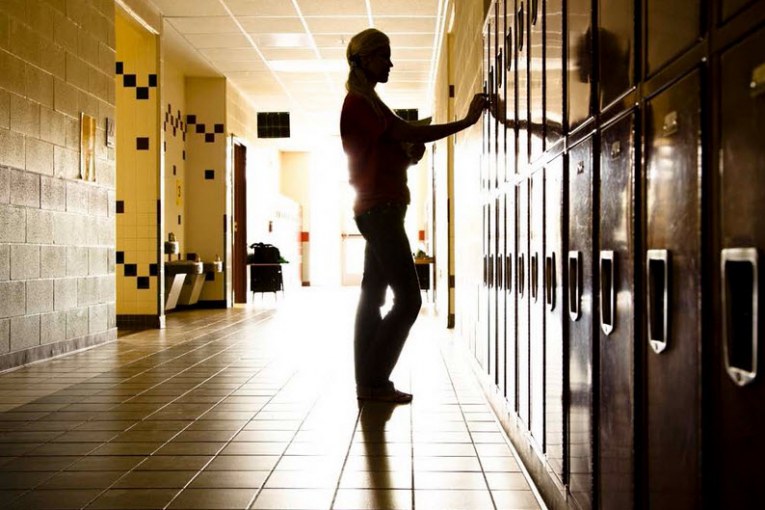
 By Nicholas von Wettberg
By Nicholas von Wettberg
Addressing the issue of school climate, and its role in the academic success and social well-being of Davis Joint Unified School District (DJUSD) students, continues to be a priority for the Board of Education.
The Board will hear an update on school climate, in particular, the results of the YouthTruth Student Survey, at its regular meeting on Thursday, April 7.
Results of the survey have been released, examined and relayed by school principals to the greater Davis school community. According to the district syllabus, the update presentation is “designed to give the Board and community a high level view of the YouthTruth Survey content, results and process timeline.”
In the past year, two climate assessments have been administered to DJUSD students: the California Healthy Kids Survey (CHKS), which concentrates its study on social-emotional aspects, safety and risky behaviors, and the YouthTruth Survey (YouthTruth).
Administered in October 2015, the YouthTruth Student Survey focuses on instructional experience, yet, unlike the CHKS, which is compared on a state level, YouthTruth results are used in comparison to schools nationwide.
The assessments are part of the district’s Strategic Plan, specifically, Strategy 3, intended to “develop and implement a district-wide assessment system aligned with the Common Core Standards to effectively analyze student performance data at more frequent intervals in order to improve instruction, close the achievement gap, and ensure that all student meet or exceed district standards.”
Improving school climate, through means of an assessment system, is Goal 6 in the district’s Local Control Accountability Plan (LCAP), which includes the actions of eight priority areas to ensure all students’ needs are successfully met via state funding.
Student data obtained by climate tools is able to provide a workable baseline to better analyze factors, such as cultural attributes.
The 11 areas of focus, included in the surveys, are: engagement; school safety; substance use/abuse; emotional/mental health; discipline – fairness; peer/teacher relationships; academic expectations; relevance of school experience; instructional methods; classroom culture; and college and career readiness.
While the YouthTruth and CHKS surveys share similarities, in seven out of the 11 areas of focus, the YouthTruth differs in that its emphasis is placed on not only instructional methods, but also college and career readiness.
In the update’s analysis, the overlap between the two surveys confirms that a climate/connectedness gap is present, and mental health, safety and wellness metrics were similar.
Where the YouthTruth Survey varied from the California Healthy Kids Survey were distinctions school to school, between grade level, between self-reported income level, by self-reported grades (A-F), and by self-reported ethnicity.
Compared to elementary school students who participated in the YouthTruth, results showed that students from Davis elementary schools felt more favorable about student engagement, personal relationships, and classroom culture.
These same Davis elementary school students felt less favorable when it came to issues of academic rigor and expectations, relevance and instructional methods.
At the junior high school level, the proportion of positive ratings between a typical Davis middle school and a typical nationally-participating school was broken down to five summary measures: student engagement; academic rigor, relationships with teachers; relationships with peers; and school culture.
Fifty-eight percent of students from typical Davis middle schools responded positively to student engagement, which was eight percent less than a typical middle school nationally.
The percentage of typical Davis middle school students who felt positive about the academic rigor registered at 67 percent. The proportion of students in a typical middle school nationally was reported at a positive rate of 76 percent.
As for relationships with teachers, the response of typical Davis middle school students was only 50 percent positive, while the response, nationally, registered at 59 percent.
The remaining junior high school measures, relationships with peers (59 percent), and school culture (51 percent), rated above the percentages of typical middle school nationally.
The summary measures for senior high schools were the same as the previous two categories, except for college and career readiness, which was rated positively by 42 percent of the students from a typical school in Davis high schools, compared with a typical school national rating of 49 percent positive.
An average rating of 3.5 out of 5, across the related questions by a proportion of students, was enough to be included in the positive ratings.
Students representing a typical school in Davis high schools rated 62 percent for student engagement, compared to 69 percent for that of a typical school nationally.
Two measures that stood out in terms of a wide gap in positive ratings from Davis students were relationships with teachers, and school culture.
Students from a typical school in Davis high schools rated 72 percent positive in relationships with teachers, compared to 53 percent for a typical school nationally.
School culture provided the biggest discrepancy in answers. Students from a typical school in Davis high schools responded with a 68-percent positive response, while students from a typical school nationally gave a positive rating of only 40 percent.
A future timeline includes the implementation of responses, as well as the YouthTruth administration in October.
Will da Vinci and Davis High’s results be calculated and publicized separately?
Thanks.